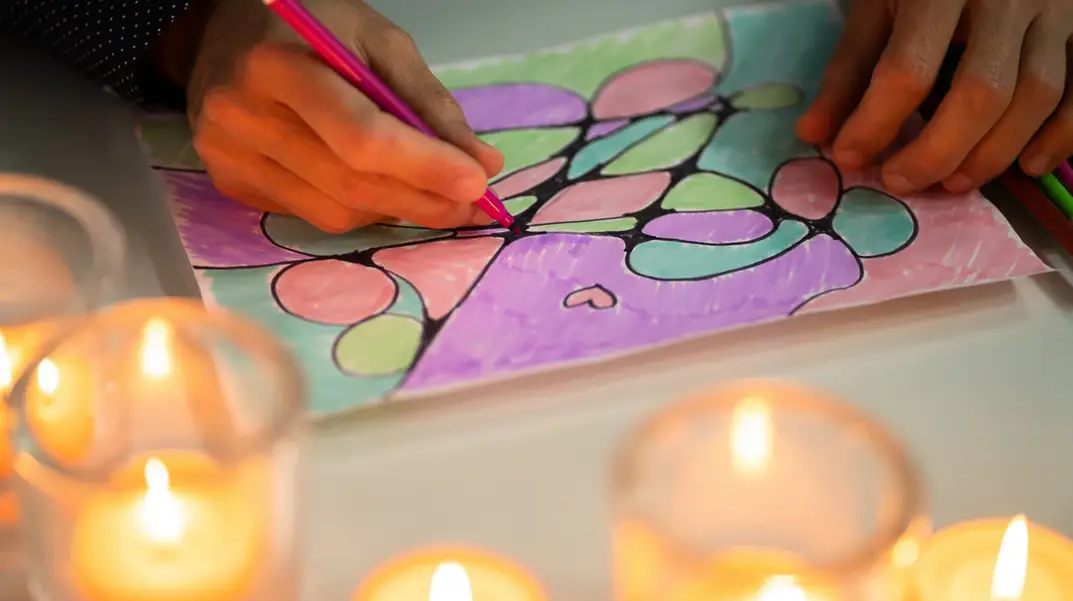Art has long been a reflective mirror of the human experience, capturing our myriad emotions, thoughts, and beliefs. Within this spectrum lies spiritual art, a genre that reaches beyond the visual to touch the intangible essence of our being. It’s a form that intertwines aesthetics and personal divinity, where each brushstroke is a quest for the sublime, each color a narrative of the soul. I find that spiritual art transcends mere representation; it’s an endeavor to convey the profound riddles of existence and our place within it.

For many, the act of creating or experiencing spiritual art fosters a profound engagement with the inner self and the universe at large. Whether through the use of symbols, colors, or abstract forms, artists convey their spiritual quests, revealing stories of faith, mystery, and the pursuit of meaning. It’s not just the outcome that embodies spirituality but the very process of creation. As a tangible manifestation of the artist’s spiritual practice, spiritual art allows me to witness their communion with the divine and tap into my own sense of connectedness.
Key Takeaways
- Spiritual art is an expression that goes beyond the visual, delving into the metaphysical.
- The creation process itself is as spiritual as the art, reflecting personal beliefs and experiences.
- Spiritual art acts as a bridge, inviting both artist and viewer to explore the depths of the soul.
The Essence of Spiritual Connection in Art
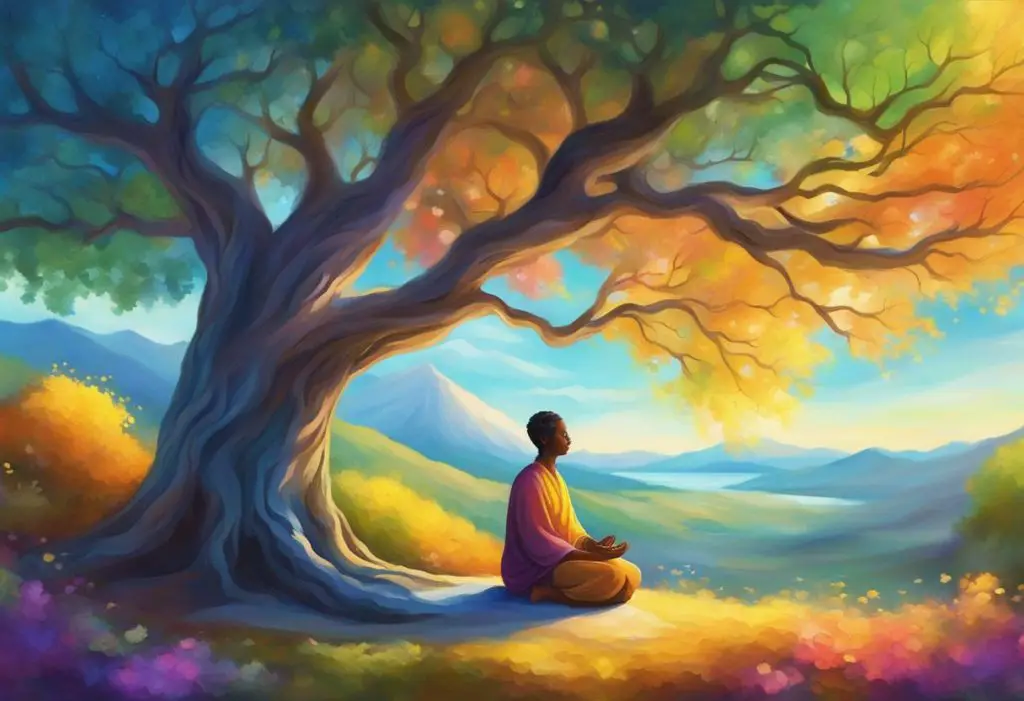
In my exploration of art, I’ve found that its spiritual connection is a profound aspect that enlivens not just the artwork, but the artist and audience alike.
Spiritual Art and Its Evolution
The journey of spiritual art is both vast and deep, illustrating the evolving relationships between the spirit and creative expression. Early art forms, like the murals of ancient temples, served as gateways to divine experiences. Fast forward to history, the Renaissance was a testament to this interrelation where spiritual motifs were fundamental. Even in abstract expressionism, artists like Kandinsky believed in Art as an echo of the soul, carving paths to spirituality through non-representational forms.
Defining the Spiritual in Art
For me, the ‘spiritual’ in art translates to anything that speaks to the essence of our inner experience—the untangible facets of conscious existence. It highlights an intimate relationship between the artist’s soul and their medium, often inviting viewers to transcend everyday experiences. It’s a bridge to our inner self, sometimes scripted in symbolic metaphors that resonate with individual interpretations.
The Interplay Between Spirituality and Creativity
I perceive creativity as the soul’s language, a heartfelt form of intimate expression that often necessitates an underlying spiritual connection. As an artist, delving into my spiritual side often leads me to unexpected prolific creativeness, where the lines between my spirit and art blur. This symbiosis forges artworks that become a part of the art of our soul, extending beyond me to touch the spirits of those who encounter my work.
Mediums and Methods for Expressing Soul in Art
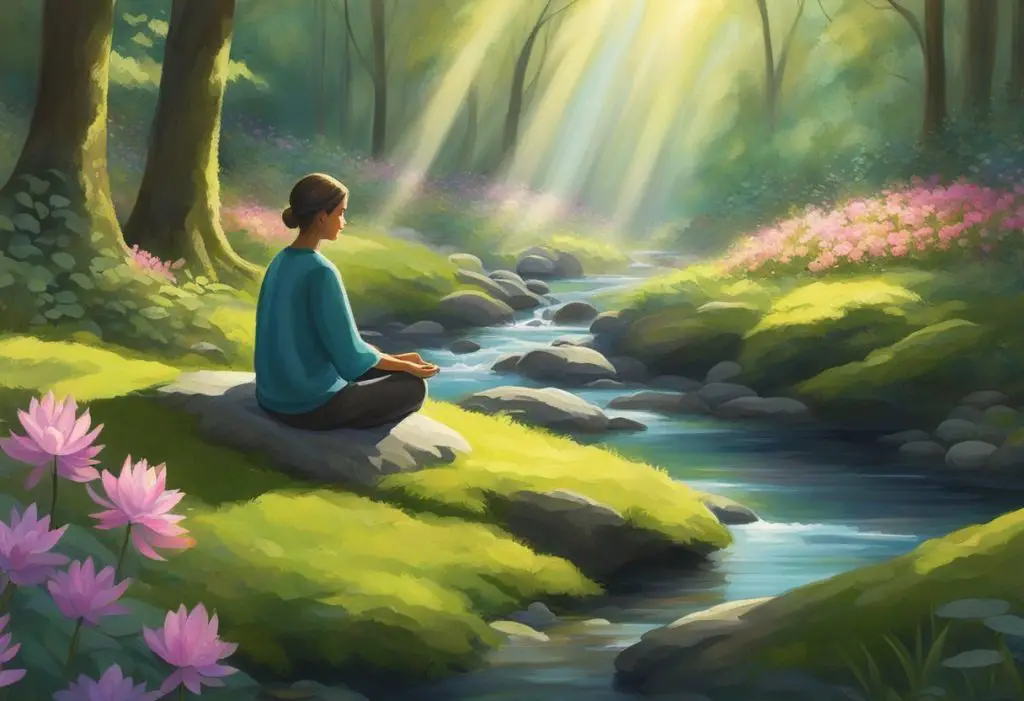
In my journey through art, I’ve found that the soul’s essence can be captured through various mediums and techniques. Here, let’s explore how the right medium and specific techniques can convey the deep connections of the spirit within art.
Choosing the Right Medium for Soul Expression
When I want to paint my soul, I consider the emotional depth that different materials can express. For instance:
- Acrylics: Versatile and fast-drying, acrylics allow for a range of textures from smooth washes to thick impasto, aiding in the expression of the soul’s complexity.
- Oils: The richness of oil paints provides a sensory depth that parallels the profound nature of the soul, ideal for capturing its nuances.
- Watercolors: Their translucency can suggest the ethereal aspects of spirituality, often used to express soulful elements with a sense of freedom and flow.
- Charcoal/Pencil: Drawing the soul often relies on the starkness and simplicity of these mediums, perfect for expressing raw emotion and deep introspection.
By aligning the qualities of these mediums with my intention, I create a resonance between my inner world and my artistic expression.
Techniques for Conveying Spiritual Deep Soul Connection Art
Technique is integral to manifesting the soul’s voice on canvas or paper. Here are a few I have adopted:
- Layering: Building layers of paint, I create depth, much like the layers of the soul, each adding to the narrative of spiritual expression.
- Glazing: Through thin, transparent layers of oils or acrylics, I achieve a luminosity that seems to emanate from within, mirroring the inner light of the soul.
- Texturing: Using tools or my hands, I add textures that evoke the soul’s tactile essence. This technique allows the viewer to feel the art as if it were alive and breathing.
- Line work: In my drawings, deliberate line work can define the soul’s contours or represent its vibrations, adding dynamism and energy to my creations.
Highlighting the Artist’s Spiritual Practice
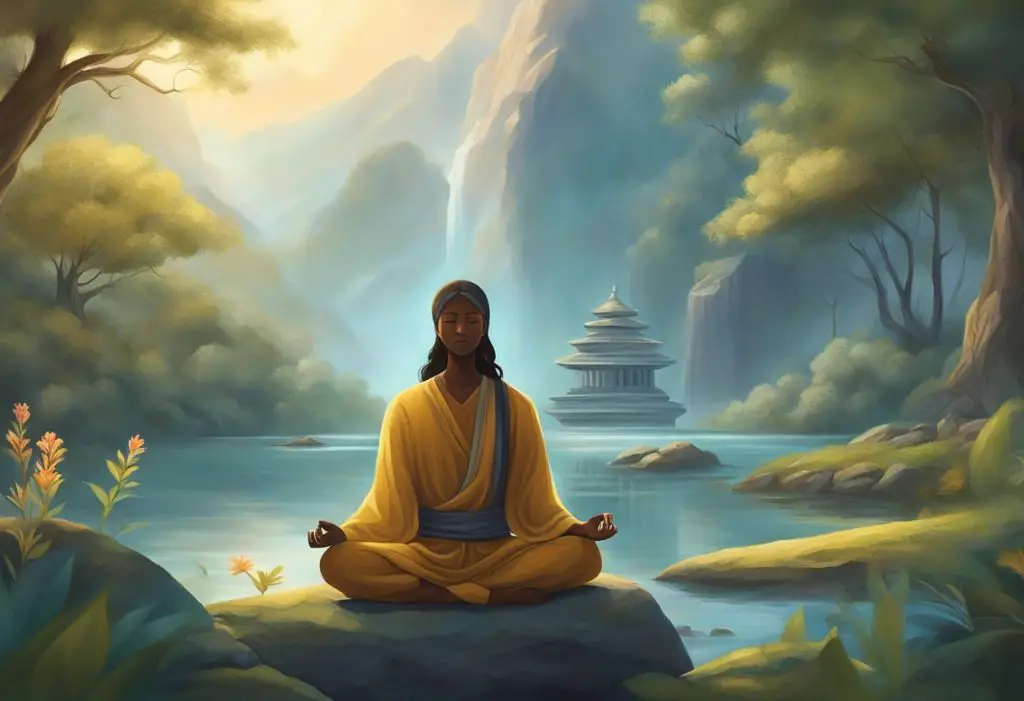
In my journey as an artist, I’ve found that a deep spiritual practice infuses life into my artwork, creating a profound connection that’s both personal and universal.
Art as a Spiritual Discipline
For me, art is more than a skill; it’s a spiritual discipline. Vibrant colors and symbolic imagery are tools I use to express my spiritual experiences. My paintings often evolve into a form of meditation that reflects my innermost revelations about life and spirituality. Artists like Deborah Nell embody this process, using an abstract approach that allows glimpses of the divine to emerge organically.
- Mediums and Techniques: Each brushstroke is deliberate; a physical manifestation of my spiritual quests.
- Themes: The themes I explore go beyond the canvas, delving into questions of existence, faith, and the ineffable.
Daily Practices for Cultivating a Strong Artist Spirit
My daily practices are integral to cultivating a spiritual connection through art. I begin each day with silence, allowing space for inspiration to arrive. This is followed by a period of reflection which often includes journaling my dreams and aspirations. It sets a foundation for my artwork to come from a true place of insight and connection.
- Meditation and Visualization: Integral for tuning into my creative intuition.
- Sketching as a Ritual: Even my preliminary sketches are done with reverence, as if inviting the divine to guide my hand.
The Inspirational Role of Spirituality in Creative Processes
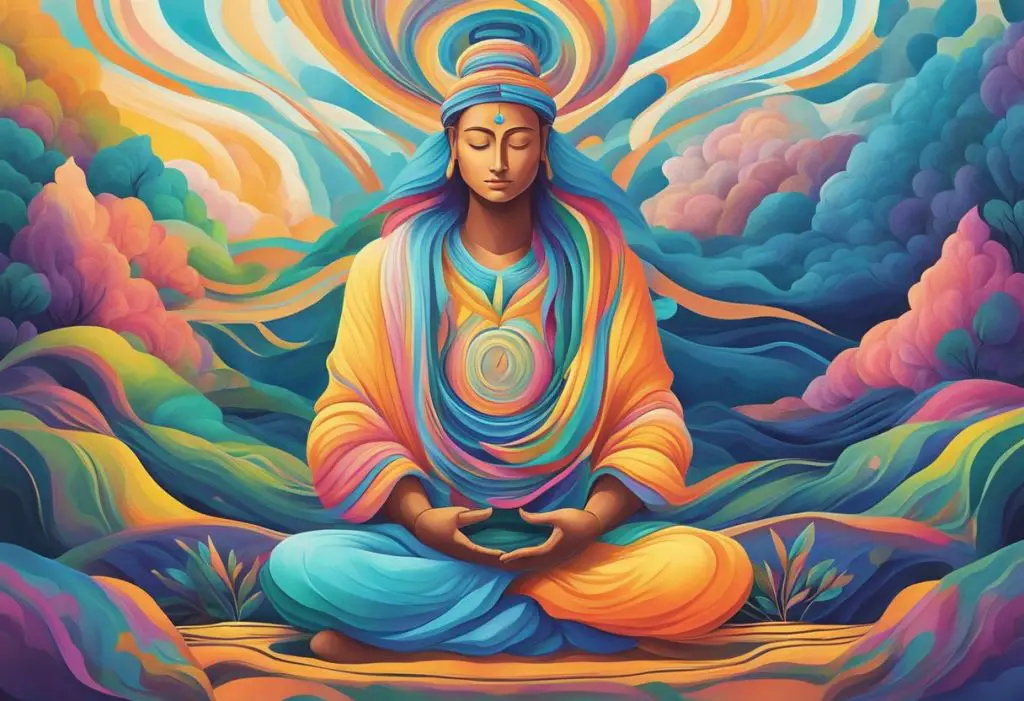
Art has offered me a profound way to tap into a higher consciousness, shaping my practice into a deeply spiritual journey. This exploration not only ignites inspiration but fosters a deep soul connection that permeates through my artistic endeavors.
Spiritual Insights Gained through Art
When I create, each brushstroke is an encounter with the spiritual realm. I’ve discovered that art serves as a vessel for the intangible, capturing nuances of spirituality that words cannot fully express. For instance, through painting, I’ve experienced moments of enlightenment that have provided clarity and purpose; it feels as though insights from a higher plane are channeled and shared via the canvas. In these practices, the spiritual aspect of life becomes tangibly interwoven with art, allowing observers to experience spirituality within a visual context.
Spiritual Consciousness in Artistic Practice
My artistic process is deeply meditative, fostering spiritual consciousness as I focus my attention on the interplay of colors and forms. It’s not just about the end product—it’s about aligning my inner energy with the creative flow. This alignment brings forth artwork that resonates with the essences of spirituality and connects with others on a soul level. I’ve learned that by embedding spirituality into my practice, every piece I create contributes to a larger dialogue about creativity as a spiritual practice, which not only shapes my identity as an artist but also nourishes my soul.
Intimacy and Connection in Soul-Reflective Art
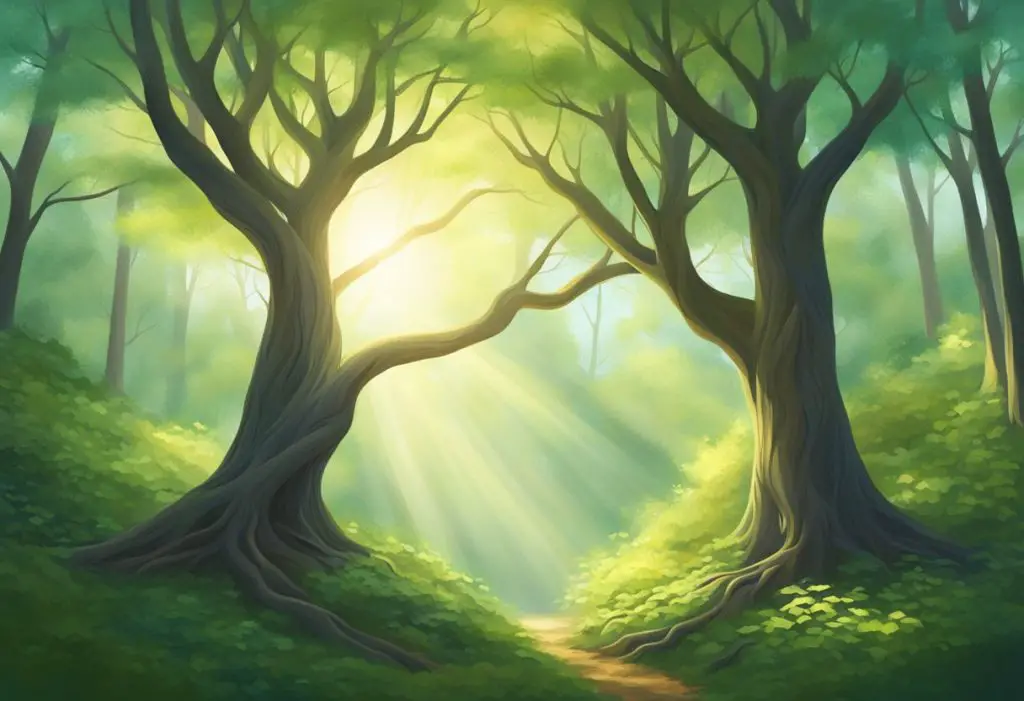
In my experience, soul-reflective art is a profound means of expressing and exploring the intimate aspects of our inner selves. It allows me to form unique connections with the audience.
Capturing the Intimacy of the Soul
When I create, my aim is to capture the essence of the soul’s intimacy. Each stroke, color, and texture represents a whisper of my inner experiences and emotions. Soul intimacy art isn’t just about portraying figures or abstract shapes; it conveys the whispers of the heart, expressed silently on the canvas. It invites viewers into a personal, sacred space, where they can connect their own experiences with mine.
For instance, in my painting “Embrace of the Spirit,” I use swirling blues and warm golds to denote comfort and serenity, drawing viewers into a reflection of their own peaceful memories or aspirations for tranquility.
Artistic Exploration of Soul Intimacy
Artistic exploration of soul intimacy is about delving into our deepest selves and sharing that vulnerability through art. My process involves introspection and often leads to an immersive experience where the canvas becomes a mirror reflecting the soul’s landscape.
- Key Elements in my Artistic Process:
- Reflection: I start with a period of meditation, focusing on my feelings and thoughts.
- Expression: I translate these feelings onto my medium of choice, be it painting, sculpture, or mixed media.
- Connection: I strive to create points within the piece where viewers can form their own emotional and spiritual attachments.
Whether a soft harmony of hues or a jarring contrast of lines, each element of my work is purposeful, meant to deepen that sense of connectivity. Through this, I hope to build bridges between my own narrative and the universal story we all share.
Visual Manifestations of the Spirit
In my journey as an artist, I’ve found that spiritual art serves as a conduit for expressing the profound and often ineffable experiences of the soul. It’s about visualizing what’s felt beyond our physical senses and translating it into forms and colors that speak to our deeper self.

Symbolism and Imagery in Spiritual Art
In the realm of spiritual art, symbols are a language unto themselves. Each brushstroke and hue can carry with them the weight of meaning and emotion. For instance, in my soul drawings, I often incorporate motifs such as the lotus flower to signify purity and enlightenment, or the use of light and dark contrast to represent the duality of existence. These symbols and images reveal souls outward, allowing viewers to connect with the art on a level that transcends mere aesthetic appreciation.
Drawing and Painting the Intangible
How do I scratch the surface of something as intangible as the spirit with mere pencil and paint? It begins, perhaps, with the intention to open up a dialogue with the divine. When I craft drawings of the soul, my lines aim to capture its essence – a fluttering flame or a gentle wave – each suggesting a different aspect of the spirit’s nature. My paintings, with their vibrant colors and evocative forms, aim to tell the story of the soul’s journey, inviting the viewer to reflect on their own spiritual paths.
Tapping into the Universal Through Art
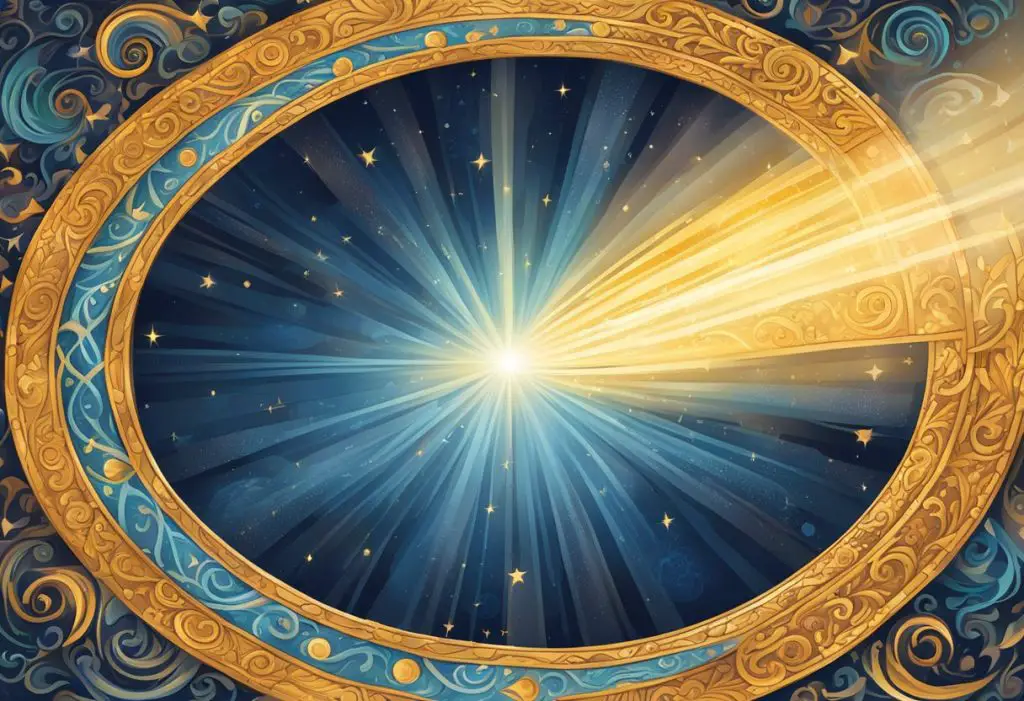
The universal aspect of spirituality often finds profound expression through art. I believe art has the unique ability to transcend the everyday, opening up vistas that connect us to the universal human spirit.
Transcending Cultural Barriers with Spiritual Art
Art possesses an extraordinary power: it speaks to our innate sense of spirituality irrespective of our backgrounds. For me, it’s like discovering a shared emotive language that resonates across diverse cultures. Spiritual concepts in art—such as engaging in creative activities and experiencing spiritual growth through the appreciation of art—highlight this connectivity beautifully. No matter where we come from, spiritual art invites us on a common journey.
Art as a Universal Language of the Spirit
I often marvel at how art can communicate profound spiritual truths without uttering a single word. It’s as if the very act of creation imbues artwork with a voice that transcends spoken language. I’ve encountered themes of love, hope, and joy—a reflection of our universal experiences and emotions that bridges our individual worlds. In this sense, spiritual art is not just a window, but a mirror, reflecting both our diverse cultures and our shared spiritual nature.
Heart & Soul Art Studio: Case Studies

In examining the Heart & Soul Art Studio, I’ve noticed the profound emphasis placed on spiritual connection through art. Their approach provides a unique lens into how artists with a deep soul focus manifest their innermost expressions.
Examining the Work of Artists with a Deep Soul Focus
At Heart & Soul Art Studio, I saw that each artist brings their own spiritual narrative to the canvas. This isn’t just about teaching art; it’s about nurturing an individual’s essence and channeling it into visual form. I noted that the studio’s curriculum is tailored to help children express their artist soul. For example, the studio offers Mom & Me Classes which create a bonding experience through the shared action of creating art, tapping into emotions and spirituality as a fundamental part of the creative process.
Art Studios as Sanctuaries for Spiritual Expression
Art studios like Heart & Soul Art Studio serve as sanctuaries for those seeking to imbue their work with spiritual meaning. The environment is crafted to be a safe haven where thoughts and emotions can be freely translated into artistic creations. In my visit, I could feel the tranquil atmosphere conducive to this type of expression. Especially in classes specifically structured for children, like Summer Camps, there seemed to be a palpable connection among the little artists, each exploring their spirituality imaginatively.
Techniques for Painting Your Soul on Canvas
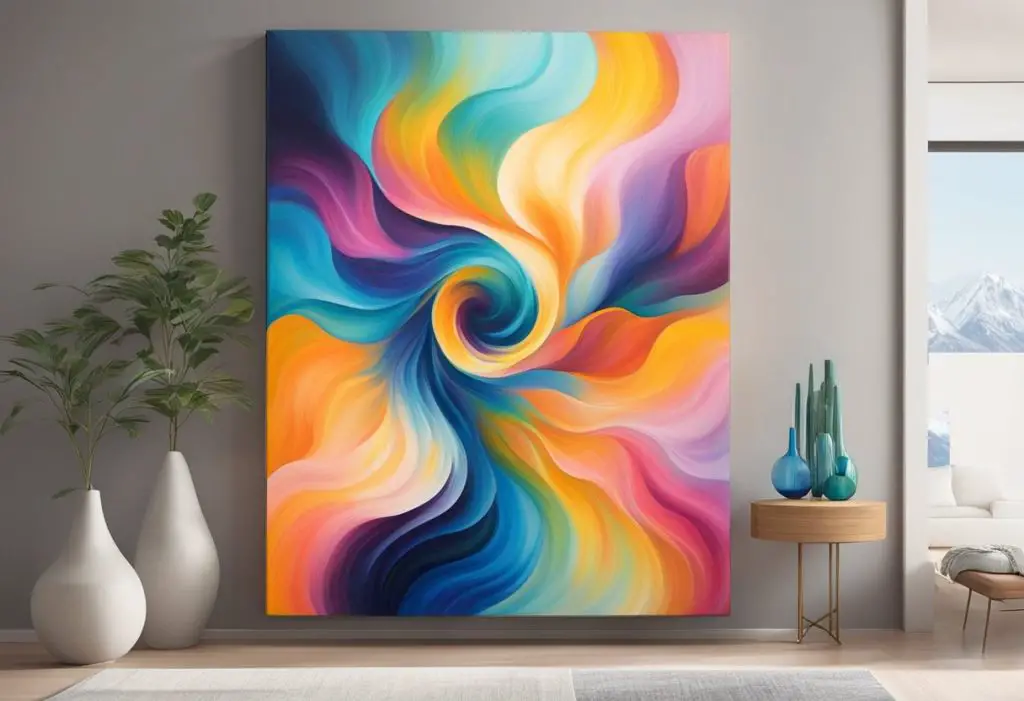
In my experience, painting your soul on canvas is a deeply personal and spiritual process. Here are some techniques to help you express your inner self through art.
Guidance on Spiritual Self-Expression through Painting
When I set out to paint my soul, I focus on silence and meditation beforehand. This prep work is essential for me because it allows for a pure flow of creativity and a true expression of my inner being on the canvas. I’ve learned to let go of any expectations and strive for authenticity rather than perfection. It’s not uncommon for me to play soothing music that resonates with my mood or the spiritual energy I wish to channel through my painting. Techniques I find beneficial include:
- Intention Setting: Before touching brush to canvas, I articulate my intentions, either in silence or by writing them down.
- Color Selection: I intuitively choose colors that reflect my current emotional and spiritual state.
- Brushwork: Flowing, unstructured brush strokes can mirror the movement and freedom of my soul.
Abstract Approaches to Depicting Spirituality
With abstract art, I give myself the freedom to explore soul drawing ideas without the constraints of realism. This method feels right for depicting something as intangible and profound as the soul. My approach involves:
- Texture and Layers: I create depth and complexity with multiple layers, which I find to be a metaphor for the soul’s journey.
- Mark Making: I use unconventional tools to make marks, which can represent various aspects of my spiritual experiences.
By employing these techniques, I aim to create a visual representation that feels true to my spirit and invites viewers to reflect on their own journeys.
Evolving Consciousness Through Artistic Endeavors

Art serves as a profound medium for personal growth and the expansion of consciousness. I find that through the act of creation, I tap into deeper levels of awareness and foster a sense of universal connection.
Art as a Catalyst for Personal and Collective Transformation
Artistic expression has always been a personal conduit for transformation. When I create, I engage with my innermost thoughts and emotions, allowing the canvas to become a reflection of my evolving consciousness. Art transcends cultural and linguistic barriers, offering a universal language that speaks to the collective soul. As an artist, I contribute to a larger conversation about who we are and who we aspire to become, both individually and as a society.
Embracing the Struggle and Enlightenment Within Artistic Growth
The struggle inherent in the artistic process is as enlightening as the end result. I’ve often found myself wrestling with a piece, trying to communicate the intangible. It’s in these moments of tension that the greatest insights about my own consciousness emerge. Growth is not without discomfort, and in embracing this struggle, I’ve discovered a rich tapestry of personal enlightenment and a roadmap for others to explore their own paths to awareness.
Frequently Asked Questions
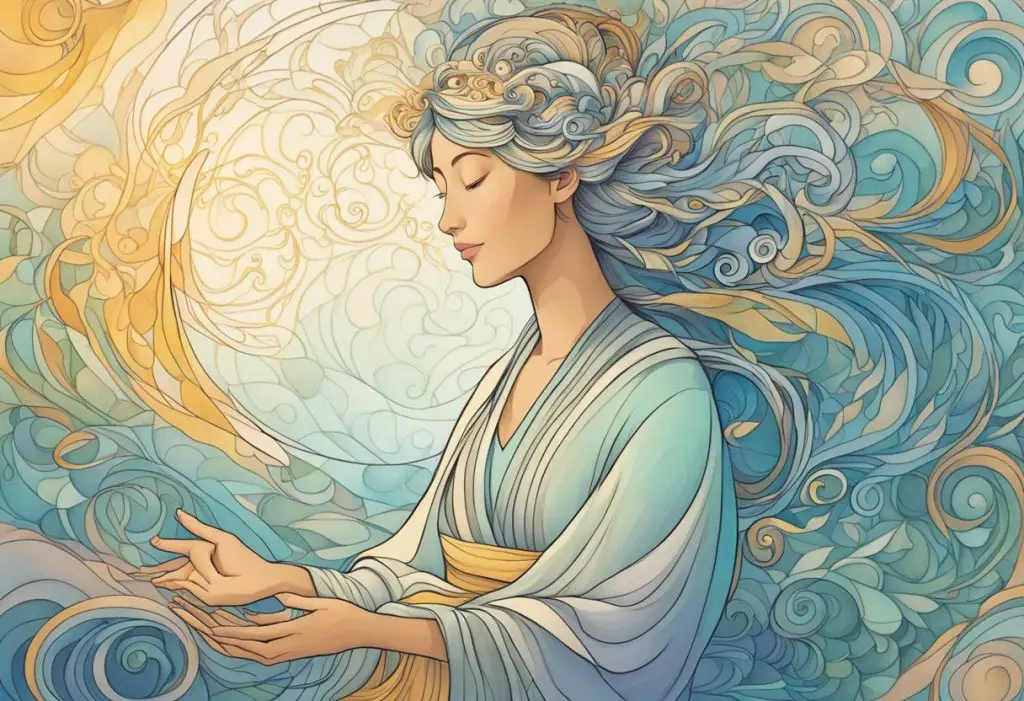
In this section, I aim to deepen your understanding of spiritual connections in art by addressing some common inquiries.
How can art be used to express spiritual beliefs?
Art serves as a powerful medium to embody spiritual concepts, allowing artists to convey their inner experiences and beliefs. Through symbology, color, and form, spiritual dimensions are brought into physical expression.
What are some examples of famous spiritual artworks?
Michelangelo’s Sistine Chapel ceiling and Leonardo da Vinci’s “The Last Supper” are seminal works renowned for their profound spiritual resonance, depicting scenes laden with religious significance.
In what ways do spiritual connections manifest in art?
Artistic expression often intertwines with spirituality through representations of the divine, the mystical, or the transcendent, providing a visual platform for spiritual exploration and storytelling.
Can spiritual art have an impact on one’s well-being?
Engaging with spiritual art has the potential to nourish the soul, offering solace and reflection, which may enhance emotional and psychological well-being.
What techniques are used to create spiritual art drawings?
Spiritual art drawings often utilize symbolic imagery, geometric patterns, and intentional use of color to craft pieces that resonate with spiritual themes.
How do you interpret the symbolism found in spiritual artwork?
Interpreting spiritual symbolism requires a blend of personal introspection and understanding cultural or religious contexts, fostering a deeper appreciation of the artwork’s underlying messages.

